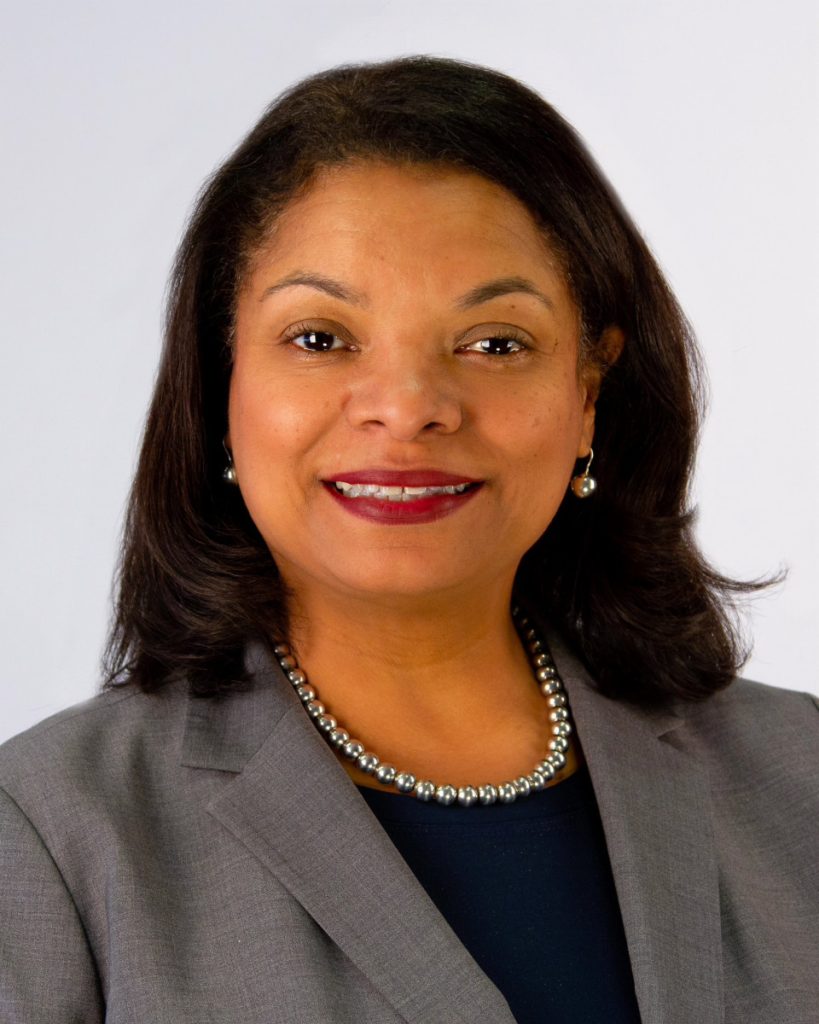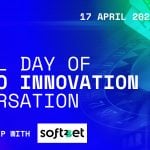
This year’s All-In Diversity Project’s annual report and All-Index gave the industry remarkable insights into industry-wide trends related to inclusion, be it related to age, gender, race, or sexual preference. The All-Index also did the good work of highlighting top performers in the industry.
We cannot simply applaud these companies for their success and stop there. Now we must learn from them so we can rise together as an industry. In order for the industry to grow more inclusive, it is useful, if not imperative, to speak with those who helped do the work to create a sense of belonging in the workplace for an entire workforce.
With that in mind, IGT’s VP of Diversity and Inclusion Kim Barker Lee spoke with SBC Americas about the work that went into achieving the company’s #3 ranking on the All-Index, starting with the care and consideration that goes into a job description and continuing through to building a diverse C-suite.
SBC: IGT recently ranked third on the latest All-Index from the All-In Diversity Project. What do you think contributed to the company’s strong result?
Our focus on DEI started well before the massive disruptions that happened in 2020. We had a solid foundation when COVID, the global reckoning with racial injustice in light of the murder of George Floyd, and the Great Resignation all created a perfect storm in the workplace. Something that made an important difference during all this was our employee-led networks, known as Diversity and Inclusion Groups. We call them “DIGs” for short. DIGs were a source of support and advocacy for all of our colleagues. Over the last two years, our groups shifted a significant amount of their focus to engagement, to wellness, to creating community, to creating networks, and to giving employees that space to really talk about what was happening in their personal and professional lives.
The other thing that served us very well, and we’re proud of, is our deliberate focus on diversity in leadership. In the past four years—at every leadership level—there has been an increase of women, people of color, and women of color. Our board is now over 33% women, inclusive of women of color. In 2018, we did not have any gender diversity in our C-suite. We now have 20% women represented in our C-suite. These are things that we are really proud of.
SBC: Those results for women in leadership are commendable, particularly when the report noted an exodus of older women in leadership positions. Do you see things you might be doing differently than the rest of the industry? What approach did you take to get women in these roles to begin with?
In general, our retention rates tend to be significantly higher on average than many companies of our size and in the technology industry. However, we did see increases in the overall voluntary separation rates for women, people of color, and women of color. We are happy to share that we have seen a complete reversal of that for people of color and women of color in 2022. We are still seeing a higher overall level of women leaving our organization on a voluntary basis in 2022,but interestingly, we are not seeing that increased level of separations of women at the VP and the director levels. It’s happening at the manager and senior manager levels, and we are paying close attention to it so we can understand what may be causing it.
Something I’d like to directly address is the question, “How do we promote women in leadership?” I think the answer blends technology and personal awareness. First, we say to everyone, “This is important to our company. We want you as a manager, as leaders to take a different look at how we are evaluating and supporting women in the workplace.” Just shifting to that mindset is significant. Our talent management processes are designed to bring attention to potential bias in how we evaluate employees. We also view the annual performance management program as an opportunity for all our managers to learn about unintentional, common biases that come up so they can build their personal awareness.
Then, there’s needing to think about talent acquisition differently. All our talent acquisition partners have undergone specific training directed at more inclusive hiring practices. Right now, all our hiring managers are going through a program called Hi to Hire, which looks at how can we hire more inclusively. So there are both formal and informal mechanisms that we are using to hire differently, to retain differently, and also to develop with the aspirational goals of women in our organization at the forefront.
SBC: How does that play out at a practical level? For example, something like a job description? Date indicates women are less inclined to a job they feel they aren’t 100% qualified for. At the recruitment level, what questions are you asking yourself about how to address that issue?
We’ve done a lot of that work. As I mentioned, all our recruiters and all of our hiring managers are looking at inclusive hiring practices right now. Questions and conversations we are starting with are: “How is your job description built? What is a must-have versus a want-to-have? Do we really need to start with a baseline of 10 years of gaming experience because we’ve already narrowed our candidate pool when we do that?” What we are really looking at is what’s required versus what is desired. This is a critical mindshift. And importantly, where can we find translatable skills? So that’s the first thing that we do. We have implemented engagement sessions between our recruitment teams and hiring managers so that there’s a really strong and in-depth conversation around that and then the job description is built around those considerations.
Beyond that, we rely on some support from technology. Our HR information system has the ability to do a bias check for the language and our job descriptions at a high level. We have an even more in-depth tool that thoroughly reviews our job descriptions. Not only do we find gendered language, but it also has adaptive technology that allows us to grow and to pick up certain concepts. I think, from a job description perspective, you get better at it over time, and we are building that with awareness within managers or recruiters. And then technology is an aid to help us catch things that we might not initially see in terms of gendered language.
SBC: As someone who has been tasked with writing the entire job description as the hiring manager, it is encouraging to hear your team put this much thought and care into crafting one.
It is a collaborative process because, at the end of the day, we want to be sure we are meeting the needs of our hiring managers by bringing in high-performing candidates. We happen to know, though, that inclusive hiring improves the process and outcome. In fact, we know that the broader and the stronger your candidate pool, the more diverse it is. So that is something that our talent acquisition team is keen on, just educating hiring managers. Now, the one thing I will say is that we have a lot of hiring managers who come to us and say, “Look, I want to see a strong diverse candidate pool. And this is what I am willing to do to invest myself in promoting it on LinkedIn and getting my team to actively recruit for this position.” We have a lot of hiring managers who themselves come with a plan of action to ensure that they get a diverse candidate pool. And that’s the best scenario possible. That it is a partnership between our talent acquisition team and our business leaders.
SBC: Shifting focus, another key focus of All-In Diversity Project’s report was the increasing importance of managing employee contentment and expectations across a range of generations. What have been your key learnings so far on that front?
We are really fortunate that one of our diversity and inclusion groups that relaunched this year was Wealth of Wisdom (WOW). That’s for our employees who are 50 years and above. Interestingly, that also coincided with the launch of NEXGEN, which focuses on Millennials and Gen Z’ers. NEXGEN is a relatively new Diversity and Inclusion Group. From the beginning, they wanted to focus IGT’s attention on how we communicate and that communication for younger generations is different. They believe strongly that employee engagement with Millennials and Gen Z’ers can be improved significantly with a different way of communicating.
Some of the areas that our NEXGEN Diversity and Inclusion Group is focused on is really highlighting the digital mindset, which we think is critical to business growth. Highlighting the business impact of a multigenerational workplace, but then also having moments of impact. Where can we actually leverage the point of view, the experiences, the communication styles of our Millennials and Gen Z’ers who may not be in leadership positions yet?
The one thing that our Millennials and Gen Z’ers were ahead of the curve on—before COVID— was promoting a flexible workplace and teaching companies that flexible workplaces in no way challenge work ethic. They are two completely different things. What these generations have wanted for quite a while is greater flexibility and how and where they work. I think one of the great opportunities we are seeing at IGT is looking at our flexible work model, evaluating it, and really bringing in the point of view of our multigenerational employees in terms of how we come up with a final model right now.
We’re still piloting different ways of working to figure out what’s going to work for us in the long term. A very powerful program our NEXGEN team started is a reverse mentorship program where our Gen Z and Millennials are the mentors to more senior leaders. A large part of that focus was on digital mindset and thinking differently about the player mindset with a generational spin to it. I really do look forward to seeing the growth of NEXGEN at IGT because I think they are so keenly focused on business impact and alignment and thinking about how that will play into a player acquisition strategy. I’m expecting lots of great things from them.
SBC: As you mentioned, IGT was ahead of the curve in establishing a diversity and inclusion program in 2018. In the past four years, what have you personally as well as the company really been proud of as key milestones or KPIs?
When we look at where we started and where we are now with diversity and our leadership, we are very pleased with our progress. We could go further, absolutely. I mean, this work does not have a finished date. I’m not going to get a gold star and walk away.
One area I am proud of is this year is that we became the very first gaming supplier to be recognized as a Best Place to Work for LGBTQ+ equality by the Human Rights Campaign Foundation, which is the leading civil rights organization for LGBTQ+ equality. The reason this is significant is sometimes with D&I work, there’s a whole host of work that happens behind the scenes in looking at your policies and practices, exploring inclusive benefits, and really creating psychological and physical safety for employees who may not always feel that in every place that they navigate in the world. The fact that we got that recognition in three years is the result of a lot of work. We had to look at the equity or inequities built into some of our policies and to make significant change. That was not a KPI that I walked in saying, “Okay, I want to get this index.” I want to do the work necessary to have the policies, the practices, the benefits in place. And guess what? Once that work was done, we were able to earn this recognition.














